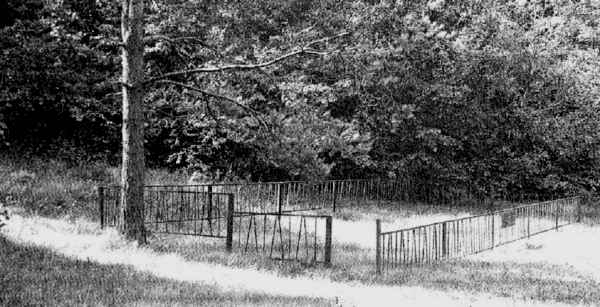 |
|
55°50' 22°12'
Zarenai (Zharan in Yiddish) is located in the northwestern part of Lithuania, in the Zamut (Zemaitija) region, about eighteen kilometers from the district administrative center Telz (Telsiai). Zharan is mentioned in historical documents beginning in the fourteenth century. In the fifteenth century Zharan was a district center. In 1665 King Jan Kazimir granted it the privilege to hold weekly markets and three yearly fairs.
Until World War I a Polish squire family owned the estate and the town. They did not lease their lands, but built houses and rented them to the Jews of the town. During the period of Independent Lithuania (1918-1940) Zharan was a county administrative center.
In 1918 the independent Lithuanian state was established. Following the Law of Autonomies for Minorities issued by the new Lithuanian government, the Minister for Jewish Affairs, Dr. Menachem (Max) Soloveitshik, ordered elections to community committees (Va'adei Kehilah) to be held in the summer of 1919. In Zharan a Va'ad (community committee) of five members was elected. The committee was active in all fields of Jewish life until the end of 1925.
According to the first government census in 1923, the population of the town was 385; among them were 174 Jews (45%). Many of them emigrated to South Africa and their number continued to decrease until before World War II there were fewer than one hundred Jews remaining. Most of the young people left the town and those who remained found they had little to do.
After World War I more than half of the Zharan Jews acquired their homes from the Polish family together with plots of lands of three to fifteen hectares. According to the agrarian reform undertaken by the government, the lands of the estate were divided among the peasants who cultivated them. The Jews who had farmed rented lands from the estate for many years, did not receive any land. The Jewish landowners had them cultivated by Lithuanian peasants and took half of the yield. The Jews owned small shops and butcher shops but most of them were poor. Only one Jewish family a few kilometers from the town cultivated their own farm.
According to the government survey of 1931 Jewish businesses included three Jewish-owned textile shops and a wool combing shop, and four flourmills in nearby villages. In 1937 there were six Jewish artisans in the town: two tailors, two butchers, one baker and one shoemaker.
There was a Beth Midrash, a rabbi and a shokhet in Zharan. In the 1920s the rabbi was Ya'akov-Mosheh Abelov.
Sixteen Zharan Zionists took part in the elections for the nineteenth Zionist Congress in 1935. They voted as follows: thirteen gave their votes for the Mizrahi party, two voted for the General Zionists B and one voted for the Labor party. Many homes had a Keren Kayemeth LeYisrael Blue Box.
One young Zharan girl emigrated to Eretz-Yisrael as a Halutsah (pioneer).
With the annexation of Lithuania to the Soviet Union and becoming a Soviet republic in summer of 1940, the lives of Zharan Jews didn't change much. There was no nationalization of Jewish shops because the Jews were so poor. In 1940 about 95 Jewish families lived in the town.
With the outbreak of war between Germany and the Soviet Union on June 22, 1941, a great part of Zharan was burnt down. The Jews did not try to escape but remained in the town. After the Lithuanian police took control, their first victim was the rabbi, Ya'akov-Mosheh Abelov. He was a young man who had arrived in Zharan from Minsk (Belarus). Lithuanian police grabbed him off the street and began to beat him. After the rabbi collapsed a policeman shot and killed him with a pistol. Another young Jew was killed because before the war he refused to sell liquor on credit to the police. A short time later 28 Jewish youth from Zharan and nearby settlements were murdered near the estate and buried there. In the middle of July 1941 some Zharan Jews were transferred to the Rainiai camp where a number of other men were still being held. All these men were badly beaten and later murdered between July 15 and 17, 1941.
Other men, and the women and children from the town were taken to a place near the (Vishoven) Viesvenai estate about 9 km. to the southeast of Telz. There, Jews from the following towns were concentrated: Alsiad (Alsedziai), Riteve (Rituva), Vorne (Varniai), Luknik (Luoke), Loikeve (Laukuva), Zharan (Zarenai) and Naveran (Navarenai). Their fate was the same as that of the Jews of Telz and the surrounding area.
|
|
| One of the mass graves in Viesvenai |
|
|
| The mass grave near the estate of Zharan |
Only seven Zharan Jews survived; six women and one man. Four of these emigrated to Israel after the war and the other three remained in Lithuania.
Sources:
Yad Vashem Archives, Jerusalem, M-9/15(6); 0-57 the Yekhiel Dambe Testimony; Koniukhovsky collection 0-71, files 57, 117
Dos Vort, Kovno, 17.12.1934
Naujienos, Chicago, 11.6.1949
The above article is an excerpt from “Protecting Our Litvak Heritage” by Josef Rosin. The book contains this article along with many others, plus an extensive description of the Litvak Jewish community in Lithuania that provides an excellent context to understand the above article. Click here to see where to obtain the book.
|
JewishGen, Inc. makes no representations regarding the accuracy of the translation.The reader may wish to refer to the original material for verification.
JewishGen is not responsible for inaccuracies or omissions in the original work and cannot rewrite or edit the text to correct inaccuracies and/or omissions.
Our mission is to produce a translation of the original work and we cannot verify the accuracy of statements or alter facts cited.
 Protecting Our Litvak Heritage
Protecting Our Litvak Heritage
 Yizkor Book Project
Yizkor Book Project
 JewishGen Home Page
JewishGen Home Page
Copyright © 1999-2024 by JewishGen, Inc.
Updated 17 Jan 2012 by JH